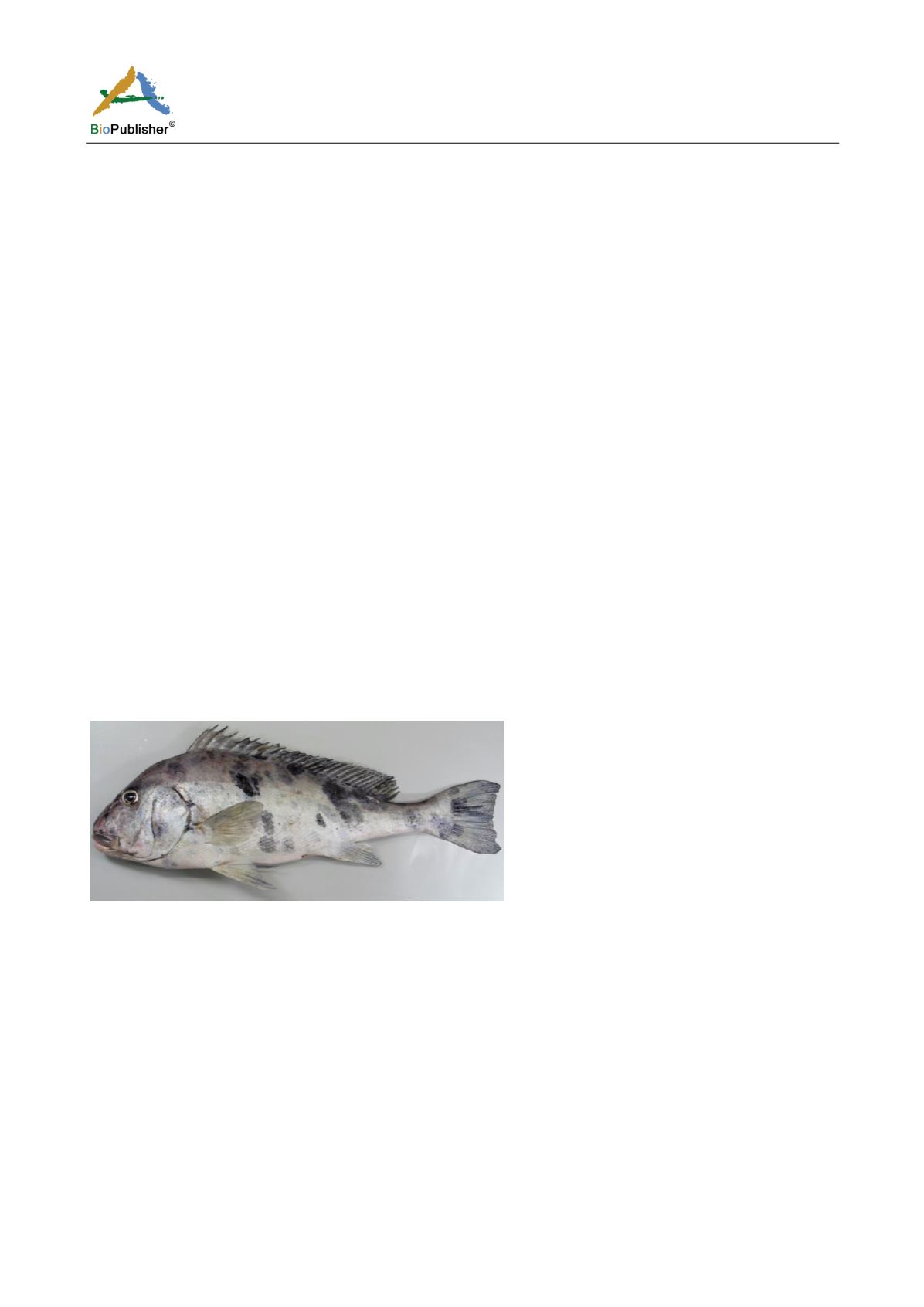
International Journal of Marine Science, 2017, Vol.7, No.30, 292-296
293
The aim of the present study are: (1) to record and describe for the first time a partial ambicoloration in
D. pictum
and
P. marmoratus
from Omani waters; (2) to add a valuable information to the world marine science library. For
these aims, this study is considered important.
1 Materials and Methods
One specimen of
D. pictum
and
P. marmoratus
were captured on 25
th
July 2012 in the waters of Salalah City on
the Arabian Sea coasts of Oman. The specimens were collected during the ichthyological survey at the Arabian
Sea coasts of Oman by Al-Mustaquila trawler vessel. Demersal trawl with a 40 mm cod end net at depth 430 m
was used for 1.5–2.0 nautical miles at a speed of approximately 3 knots, 0.5 h tows. Body and fins were examined
carefully for external parasites, malformations, amputations and any other morphological anomalies. Once in the
laboratory, measurements were recorded to the nearest millimetre. The specimens were fixed in 10% formalin and
later preserved in 70% ethanol for deposit in the fish collection of the Marine Science and Fisheries Centre,
Ministry of Agriculture and Fisheries Wealth, Muscat, Sultanate of Oman. Catalogue numbers OMMSFC 01023
and 01024 for
D. pictum
and
P. marmoratus
respectively.
2 Results
Ambicoloration cases were observed in the two species of the two families studied. The description of the aberrant
coloration distribution in each species studied is given below based on the case of color abnormality.
I. Partial melanic pigmentation case
Family: Haemulidae
Diagramma pictum
(Thunberg, 1792)
Normal coloration of the species:
Body with a uniform grey color on both dorsal and ventral sides. Fins are darker than body, with the posterior part
of the dorsal and the whole caudal fins having dark spots.
Color of abnormal specimen (570 mm TL, 490 mm SL) (Figure 1).
Figure 1
Diagramma pictum
, 570 mm TL, 490 mm SL, showing partial melanic pigmentation
The melanic spots distributed in both dorsal and ventral sides of the lateral, but they found mainly on the dorsal
side. They dispersed from the nape to the base of the caudal fin. The pigments of those of the dorsal sides are
darker than those of the ventral side. Pigments get diffused toward the ventral side, with the most ventral diffused
patch is located just dorsal to the cloaca. On the dorsal-lateral side of the fish, there are two centres for melanic
spots. One is located is located under the spinous part of the dorsal fin and the other under the spinous part of this
fin. Several melanic spots with different sizes and grades of coloration are present between the two centres and
beyond them towards the head and the caudal fin. On the ventral-lateral side and under the 1
st
centre of
aggregation of melanic spots, there are 3 pale large spots. Towards the posterior part of the fish, several pale large
melanic pigments are present.
II. Ambicoloration case
Family: Soleidae
Pardachirus marmoratus
(Lacepède, 1802)


